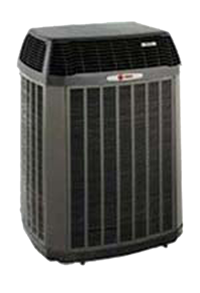Electric Heat Pump Program

For members building a new home or converting from gas to electric home heating, Claiborne Electric will provide a rebate in the amount of $100 per ton for members who install an energy-efficient heat pump. The maximum rebate for this program is $500 per unit.
For members replacing existing electric heating with a new heat pump, Claiborne Electric will provide a rebate in the amount of $50 per ton, with a maximum rebate of $250 per unit.
Members may receive rebates for more than one unit.
Frequently Asked Questions
Q:
What is a heat pump and how does it work?
A:
A heat pump is essentially a central air conditioning system that also has the ability to heat your home during cold weather months. It’s called a "heat pump" because it pumps heat into your home in winter, and pumps heat out of your home in summer. Its ability to both heat and cool makes it a very economical and efficient home comfort system.
In summer, it functions exactly like a standard central air conditioning system, pulling the heat out of your home and releasing it outside. In winter, it simply reverses the process, extracting the heat that’s present in outdoor air and pumping it into your home.
Q:
How can a heat pump obtain heat from cold winter air?
A:
As strange as it may seem, heat is present in all air, even air that’s well below freezing. Think of the way your refrigerator removes unwanted heat that accumulates when you open the door and place warm food inside. You can feel that heat coming back into your kitchen from the refrigerator’s exhaust fan. In a similar way, heat pumps remove heat from cold outdoor air and deliver it to your home to keep you warm and comfortable.
Q:
What does a heat pump look like?
A:
A typical heat pump installation consists of two parts: an outdoor unit that contains the outdoor coil, compressor, reversing valve, and fan; and an indoor unit that contains the indoor coil, supplemental heater and fan. The outdoor unit looks exactly like a central air conditioner. The indoor unit is called an air handler and looks similar to a gas furnace.
A:
There isn’t one. The heat pump takes its place. Because a heat pump simply moves heat from one place to another, there is no burning of fuel to make heat. This also means no smoke and no fumes.
Q:
Can heat pumps be installed in existing homes?
A:
Yes, especially if you already have a forced-air heating system, suitable ductwork and adequate insulation.
Q:
Do heat pumps have efficiency ratings?
A:
Yes. In fact, they have two; one for heating and one for cooling. The heating rating is called the Heating Seasonal Performance Factor (HSPF), and the cooling rating is called the Seasonal Energy Efficiency Ratio (SEER). In both cases, the higher the number, the greater the efficiency and the lower the operating costs. When comparing ratings, remember that they are based on the total system, meaning the combination of the outdoor unit and the indoor unit.
Q:
Why is a heat pump so economical?
A:
Because during the heating season, a heat pump simply has to move heat instead of making it. Unlike a furnace that must turn fossil fuel or electricity into heat, the heat pump simply collects heat that already exists in the outdoor air and pumps it into your home.
Q:
Why do heat pumps have supplemental heaters?
A:
Heat naturally migrates from warmer to colder areas through windows, doors, ceilings and walls. Insulation, weather-stripping and caulk slow down this heat loss, but cannot totally eliminate it. The colder it becomes, the faster a home loses heat.
The supplemental heater helps the heat pump during weather extremes when a home may lose heat faster than the heat pump can replace it. Electric heating elements in the indoor unit turn on automatically to make up the difference.

